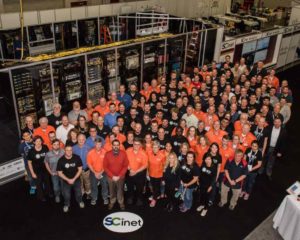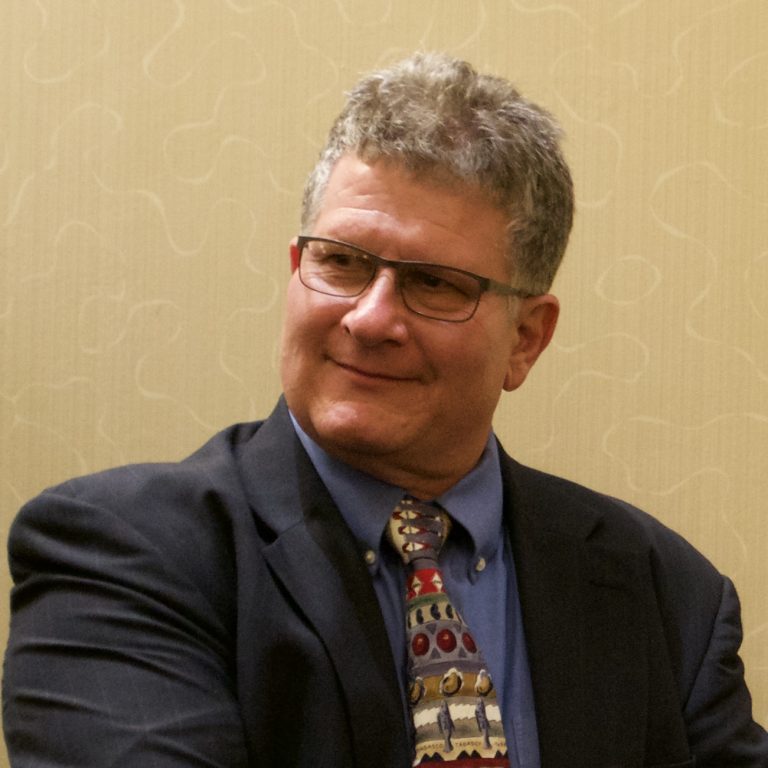In this guest feature, Jeffrey Schwab describes his role as SCinet Chair at SC17 and how his team of volunteers is building the fastest and most powerful volunteer-built network in the world.
What does it take to build a network for the SC Conference?

Jeffrey Schwab
Jeffrey Schwab: Building SCinet is very much like planning the roads for a large city with heavy traffic. SCinet volunteers build everything from the highways connecting the SC “city” to other cities (the wide area network) to the main thoroughfares that move traffic within the city (the network backbone) to the smaller streets that feed the neighborhoods where people work and live (the individual room networking).
SCinet takes one year to plan, three weeks to build, one week to operate and less than 24 hours to tear down. And more 150 volunteers from higher education, high performance computing centers, networking equipment vendors, U.S. national laboratories, research institutions, research networks and telecommunication carriers make it possible.
What is your story of getting involved with SCinet and your path to becoming SCinet chair?
Jeffrey Schwab: I got involved with the SC Conference through the SC Global project, which was the AccessGrid venue for SC presentations that ran until 2006. SC Global was a heavy network resource consumer, so I worked closely with SCinet’s IP services team on the project. As it wrapped up, I started looking for opportunities to stay involved in the SC community. The IP services team at the time was seeking more volunteers to meet growing needs for network support in meeting rooms and conference offices. My background is in campus networking, so joining that team felt like a good fit.
I worked with the IP services team for several years and learned how it integrated with the rest of SCinet. I also met many of the people who volunteer for SC at the conference level. As things progressed, I was asked to help lead the Commodity Networks team and learned more about what it takes for SCinet to create the network for the SC conference. That all led to my role as SC16 deputy chair of SCinet and now chair for SC17.
 How has SCinet evolved during that time?
How has SCinet evolved during that time?
Jeffrey Schwab: SCinet has grown tremendously in size and complexity over the last decade. At SC16, show floor traffic peaked at 1.2 Terabits per second! Network research demonstrations on the show floor are more sophisticated and demanding of network resources now than ever before. The planning process for many of these demonstrations takes many months of close collaboration with researchers and demonstrators, who frequently push the envelope of what SCinet can deliver. Conference attendees’ needs are evolving, too, including the need for a wireless service that is ubiquitous and highly reliable. To top that all off, as the conference moves to different convention centers every year, SCinet volunteers face a continual challenge to adapt the network to each environment, in addition to the needs of those who use it.
Who are the people working behind-the-scenes of SCinet?
Jeffrey Schwab: At the core of SCinet is a dedicated group of talented engineers from universities and government laboratories located not only across the United States, but around the world. I believe the main attraction for SCinet volunteers is the opportunity to build something unique on a scale and timetable that is challenging in its own right. The people involved learn something every year that they can take back to their home institutions. Employers see the benefit of the SCinet experience in the technical knowledge and professional relationships their employees build, which ultimately translates into supporting their continued participation. This cycle boosts the value volunteers bring to their day jobs – and the value they bring back to SCinet as returning volunteers.
SC returns to Denver this year for the first time since 2013. From a SCinet perspective, what’s the best part about convening in the Mile High City?
Jeffrey Schwab: Denver is a marvelous venue for SCinet. The city is a crossroads from the plains into the mountains and is a major connection point for many of the country’s fiber optic networks. Working with industry partners in Denver, we have unique opportunities to bring in long haul fiber optic circuits to a wide variety of destinations both domestically and internationally for SC17.

Just some of the SCinet team from SC16
The venue will provide a healthy dose of challenges for the SCinet team, too. The Colorado Convention Center is a beautiful facility with many open spaces, providing an inviting atmosphere for exhibitors, presenters and attendees. That same environment presents a wireless deployment challenge for SCinet, as we have to create an infrastructure capable of delivering continuous wireless coverage that meets the needs of more than 11,000 guests – and likely as many wireless devices.
Overall, I am looking forward to being back in Denver. The ambiance of the city itself combined with wonderful restaurants and family-friendly attractions are sure to add to an already rewarding SC experience for all.
Jeffrey Schwab is the infrastructure architect at Purdue University’s West Lafayette campus, where he is responsible for the design and architecture of the campus network. During his 35 years with the university, he has worn many hats in the networking and infrastructure arenas, including serving as the director of data networking for the campus. Prior to his roles at Purdue University, he worked for both Digital Equipment Corporation and IBM.
He has served as a SCinet volunteer since 2006.
Source: SC17




